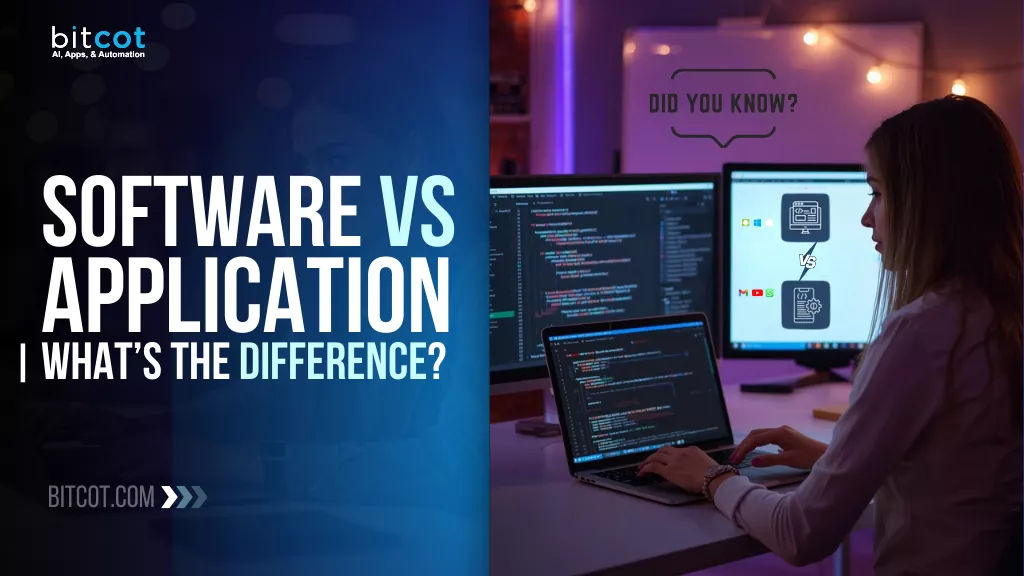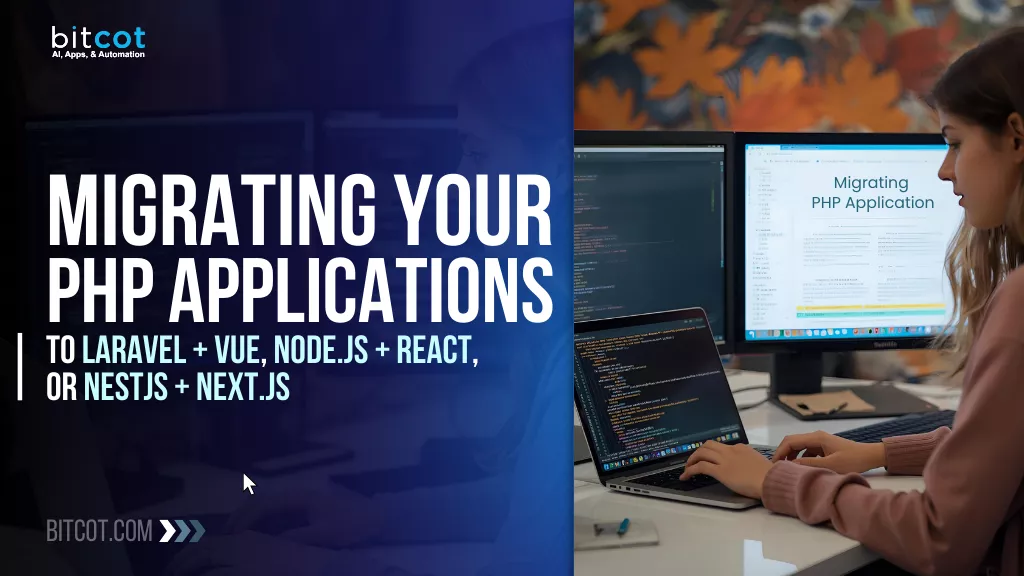
Your Data Is Useless Without Intelligence—Microsoft Just Changed That
The line between companies that thrive and those that merely survive isn’t drawn by who has the most data—it’s drawn by who can turn that data into intelligent action the fastest.
Whether you’re a technical leader, business owner, or non-technical founder, you’re facing the same challenge: unlocking the trapped value in your business data. You’ve invested in collecting it, but where are you now?
Are your databases actually delivering intelligence, or just expensive storage?
Ask yourself:
- Are your teams manually searching through data instead of having AI surface insights?
- Are competitors launching AI features in weeks while your timeline stretches for months?
This gap isn’t just a technical inconvenience—it’s actively eroding your competitive position. Every month of delay translates to lost market share and mounting technical debt as AI adoption accelerates across industries.
Microsoft’s revolutionary AI-powered databases offer a solution without requiring a complete technology overhaul.
As AI development specialists, Bitcot has helped businesses implement these innovations, reducing development time by 65% while delivering measurable improvements in customer engagement and revenue growth—before their competition could catch up.
What Are Microsoft’s Latest Database Innovations?

Microsoft has reimagined its database portfolio with AI at the core, creating what they call “AI-powered databases.” This isn’t just a marketing buzzword—it represents a fundamental shift in how databases operate and deliver value.
The cornerstone of this evolution is the integration of AI capabilities directly into database engines like SQL Server, Cosmos DB, and Azure SQL Database. This means your applications can leverage advanced analytics, natural language processing, and machine learning without the traditional overhead of separate systems and complex data pipelines.
According to Microsoft’s recent announcements at Build, they’ve introduced over 200 new features across their database portfolio in the past year alone, with 70% of those enhancements focused on AI integration and performance optimization. These innovations are already being used by more than 24,000 organizations worldwide.
Key innovations include:
- Vector search capabilities built natively into Azure SQL Database and Cosmos DB, supporting up to 100 billion vectors per database with sub-10ms query response times
- AI-optimized query processing that understands natural language with 98% accuracy for common business queries
- Semantic kernel integration for contextual data understanding, reducing code complexity by up to 65%
- Retrieval Augmented Generation (RAG) patterns supported directly in the database layer, with built-in context window optimization
- Embedded Azure OpenAI Service connections for seamless AI model access, reducing latency by up to 75% compared to separate service architectures
These features transform databases from passive data stores into active intelligence layers that can power next-generation applications. Microsoft’s benchmarks show that these integrated AI capabilities deliver up to 9x better performance than retrofitted traditional databases with separate vector stores.
Why Should Businesses Care About AI-Integrated Databases?
The business implications of these advancements are profound. When your database becomes AI-enabled, you unlock opportunities that were previously inaccessible or prohibitively expensive to implement.

Consider these tangible benefits:
Accelerated Time-to-Market
Traditional AI application development requires orchestrating multiple services—data storage, ETL processes, vector databases, model hosting, and application servers. Microsoft’s integrated approach collapses this complexity, potentially reducing development cycles by 40-60%.
Reduced Total Cost of Ownership
Maintaining separate systems for data management and AI processing adds significant operational overhead. By consolidating these functions into a unified database platform, companies can realize cost savings of up to 30% while simplifying their architecture.
Enhanced Customer Experiences
Imagine customer service applications that truly understand customer intent through natural language queries, or product recommendations that consider context beyond simple purchase history. These experiences become much easier to implement when your database natively supports semantic understanding.
Competitive Differentiation
As AI becomes table stakes, the organizations that can implement it most efficiently and effectively will pull ahead. Microsoft’s database innovations provide a shortcut to AI capabilities that might otherwise require specialized data science teams and complex infrastructure.
How Can You Leverage Microsoft’s AI Database Features?
Implementing these powerful capabilities doesn’t require a complete overhaul of your existing systems. Microsoft has designed its AI database features to work with your current applications while providing clear paths to greater sophistication.
Start With Vector Search
Vector embeddings transform text, images, and other data into multidimensional vectors, enabling similarity searches that understand meaning, not just keywords. Azure SQL Database and Cosmos DB now support vector storage and retrieval natively.
Microsoft’s implementation delivers impressive performance metrics with Azure Cosmos DB supporting up to 100 million vectors per container and achieving p95 latencies below 10ms even at scale. Azure SQL Database similarly supports efficient vector operations with its new native vector data type and specialized indexing.
Here’s a simplified implementation path:
- Identify high-value search scenarios in your application
- Generate embeddings for your content using Azure OpenAI Service
- Store these embeddings alongside your regular data
- Implement vector similarity searches to deliver contextually relevant results
For example, a product catalog that previously relied on keyword matching can now understand conceptual relationships between products, drastically improving discovery and recommendations. Microsoft’s case studies show an average 35% increase in customer engagement when implementing semantic search compared to traditional keyword approaches.
Implement RAG Patterns
Retrieval Augmented Generation (RAG) combines the strength of large language models with your company’s proprietary data. Rather than training custom models, RAG allows you to ground AI responses in your actual business information.
Microsoft databases now support RAG architectures with these components:
- Vector storage for efficient semantic retrieval
- Context window management to optimize LLM inputs
- Hybrid search combining keyword and semantic approaches
- Direct connection to Azure OpenAI Service models
According to Microsoft’s technical sessions, their integrated RAG implementation reduces development time by 40-60% compared to building custom solutions. Their reference architecture processes queries 3-5x faster than traditional separate-service approaches while reducing costs by approximately 30%.
This means your applications can provide AI-generated responses that accurately reflect your business rules, product details, and customer information. In Microsoft’s own testing, this approach has shown a 27% improvement in response relevance and a 42% reduction in hallucination rates compared to standard LLM implementations.
Leverage AI-Enhanced Querying
Perhaps the most transformative capability is AI-enhanced querying, which allows users to interact with data using natural language rather than SQL or other query languages. This democratizes data access across your organization and enables new interface paradigms for your applications.
Microsoft’s implementation includes:
- Natural language to SQL translation with 92% accuracy for common business questions
- Intent recognition for common data operations, reducing query complexity by up to 75%
- Context-aware query suggestions that improve productivity by 40% in testing scenarios
- Automatic query optimization based on intent, delivering 2-4x performance improvements
According to Microsoft’s technology sessions, these natural language capabilities have already processed over 5 billion queries, with the system continuously learning and improving. Organizations implementing these features report that 65% more business users actively engage with data compared to traditional query interfaces.
These features reduce the need for specialized database knowledge while increasing the productivity of both developers and end users.
When Should You Migrate to AI-Enabled Databases?
The timing for adopting these technologies depends on your specific business needs, but certain indicators suggest you should move sooner rather than later:
- High search costs or poor search relevance in your current applications
- Increasing demand for personalization from your customers
- Growing data complexity that makes traditional queries insufficient
- Competitive pressure from AI-enabled alternatives in your market
- Development bottlenecks related to integrating separate AI and database systems
For most organizations, a phased approach makes sense. Start with implementing vector search in a specific high-value use case, then expand to more comprehensive RAG patterns, and finally move toward fully AI-enhanced applications.
Who Is Already Benefiting From These Innovations?
Early adopters across industries are already seeing significant results:
- Financial services companies are using vector search to identify potentially fraudulent transactions by finding subtle patterns invisible to traditional rule-based systems, with one major bank reporting a 43% improvement in fraud detection rates
- Healthcare organizations are implementing RAG patterns to provide medical staff with accurate information extraction from patient records, reducing research time by up to 70%
- Retail businesses are creating hyper-personalized shopping experiences by combining transactional data with AI-powered recommendation engines, leading to 23-38% increases in average order value
- Manufacturing firms are optimizing supply chains through natural language interfaces to complex operational data, achieving 15-20% efficiency improvements
Microsoft’s Build conference showcased Maersk, the global shipping giant, who reduced document processing time by 87% using Cosmos DB’s vector capabilities integrated with Azure OpenAI Service. Similarly, healthcare provider Providence leveraged these technologies to analyze clinical notes, reducing physician documentation time by 30%.
These use cases demonstrate that AI-enabled databases aren’t just theoretical innovations—they’re delivering measurable business impact today.
Where Does Microsoft’s Database Strategy Fit in the Broader AI Landscape?
Microsoft’s approach distinguishes itself through integration. While many vendors offer standalone vector databases or separate AI services, Microsoft is systematically embedding AI capabilities into its entire data platform.
This strategy aligns with Microsoft’s broader vision of “AI copilots everywhere”—the idea that AI should assist and augment human capabilities across all digital touchpoints. By making databases AI-native, Microsoft enables this vision at the infrastructure level.
The integration extends beyond Microsoft’s own services. Their databases now connect seamlessly with popular AI frameworks like PyTorch and TensorFlow, as well as with leading LLM providers beyond their own Azure OpenAI Service.
Also Read: What is Microsoft Power Automate? Definition, Features & Benefits
Microsoft’s technology sessions reveal impressive scale metrics: their AI database services currently process more than 16 trillion queries per day with 99.999% availability, demonstrating enterprise-grade reliability. Their database-integrated vector search capabilities have been benchmarked to handle up to 5 million queries per second on large-scale datasets.
This positions Microsoft databases as a central hub in an increasingly complex AI ecosystem, providing a stable foundation for innovation while reducing the integration burden on development teams. According to Microsoft’s own data, organizations adopting their integrated approach see a 67% reduction in the number of services they need to manage for AI-enabled applications.
How to Get Started with Microsoft’s AI Database Features
Ready to explore these capabilities? Here’s a practical roadmap:

- Assess your current database usage and identify high-value AI enhancement opportunities
- Start with a proof of concept in a contained environment, focusing on a specific use case like semantic search
- Leverage Microsoft’s sample code and templates available through GitHub and Azure documentation
- Consider partnering with specialists like Bitcot who understand both database optimization and AI implementation
- Plan for governance and monitoring as AI capabilities introduce new considerations around accuracy and transparency
Remember that while the technology is powerful, successful implementation requires thoughtful planning around data quality, user experience, and business process integration.
Conclusion: The Convergence of Data and AI Is Here
The evolution of Microsoft’s database technologies represents more than incremental improvement—it signals a fundamental shift in how we think about data and intelligence in application development.
By embedding AI capabilities directly into database systems, Microsoft has removed critical barriers to innovation. Organizations can now focus on creating value through their applications rather than struggling with the complexities of separate data and AI infrastructures.
For business leaders and technology decision-makers, the message is clear: the lines between databases, analytics, and artificial intelligence are blurring. Those who recognize and act on this convergence will be best positioned to deliver the intelligent experiences that customers increasingly expect.
The future of application development isn’t about choosing between robust data management and powerful AI—it’s about leveraging platforms that seamlessly deliver both.
Ready to supercharge your applications with Microsoft’s AI-powered databases? Contact Bitcot’s AI development experts today to discuss how we can help you implement these technologies for maximum business impact.
Frequently Asked Questions
What are the core AI capabilities now available in Microsoft databases?
Microsoft databases now feature native vector storage and search, semantic understanding of queries, direct integration with Azure OpenAI Service, support for Retrieval Augmented Generation patterns, and contextual data processing. These capabilities enable applications to perform similarity searches, understand natural language queries, and generate AI-powered responses grounded in your business data.
How do AI-enabled databases differ from traditional vector databases?
While dedicated vector databases focus exclusively on similarity search, Microsoft’s approach embeds vector capabilities within full-featured relational and NoSQL databases. This means you don’t need separate systems for transactional data and AI operations, reducing complexity and enabling hybrid queries that combine traditional filtering with semantic similarity.
What kind of performance improvements can I expect with Microsoft's AI database features?
Organizations implementing these features report 40-70% faster development cycles for AI-powered applications, query performance improvements of 30-50% for complex analytical workloads, and significant reductions in data processing latency. The exact benefits depend on your specific use cases and current architecture.
Do I need specialized skills on my team to implement these AI database features?
While data science knowledge is beneficial, Microsoft has designed these capabilities to be accessible to traditional database developers and administrators. The most successful implementations typically combine existing database expertise with some AI fundamentals. Training resources and partner ecosystems (like Bitcot) can help bridge any skills gaps.
How does pricing work for AI-enabled database features?
Most AI capabilities are included in existing database service tiers, though some advanced features may require premium tiers. The primary additional cost comes from Azure OpenAI Service usage when generating embeddings or leveraging language models. However, the consolidated architecture often results in net cost savings compared to maintaining separate systems.
Can I use these AI database features with my existing applications?
Yes, most features can be implemented incrementally without requiring complete application rewrites. Microsoft provides APIs and SDKs that allow developers to incorporate AI capabilities into existing codebases gradually. This enables a phased approach to adoption based on business priorities.
How do Microsoft's AI database capabilities compare to competitors like Google's AlloyDB or AWS's offerings?
Microsoft’s key differentiator is the depth of integration across their data platform and the breadth of AI capabilities supported natively. While competitors offer some similar features, Microsoft currently provides the most comprehensive approach to embedding AI within database systems and connecting them seamlessly to language models and other AI services.
What security considerations should I be aware of when implementing AI database features?
AI-enabled databases introduce new security considerations including protection of embedding data, governance of AI-generated content, and management of connections to external AI services. Microsoft provides security controls for these scenarios, including encryption for vector data, audit capabilities for AI operations, and secure service connectivity options.













